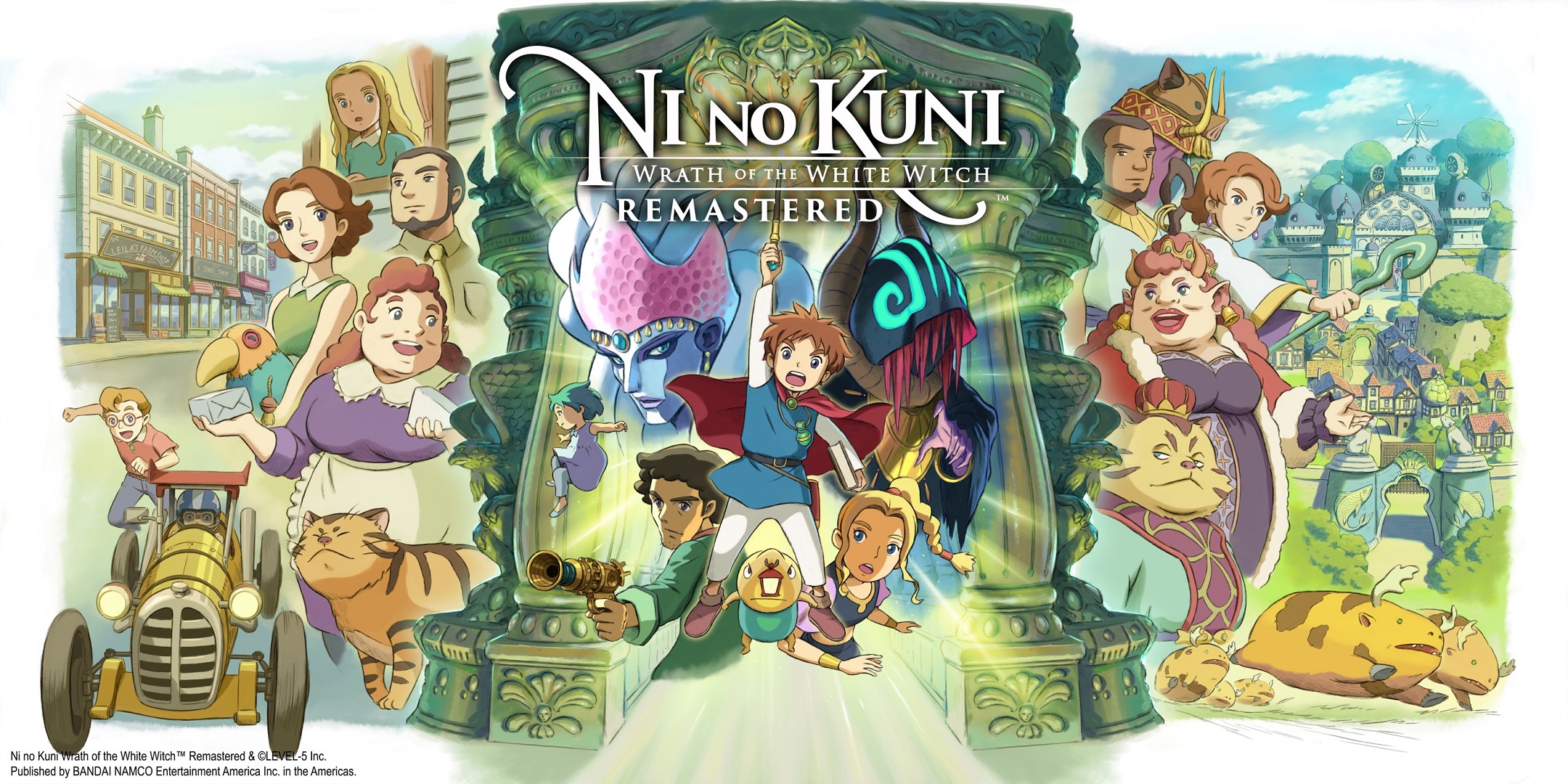
Ni No Kuni was one of those JRPG’s that I was able to finish in only a few days, not because it was short but because the world and the story was so well crafted that I immediately fell in love with the game and struggled to put the controller down. The beauty of Studio Ghibli’s art style and presentation carried out over the course of dozens of hours is something I never thought could be properly executed until I sat down to play Ni No Kuni when it first released. There was no one better suited to handle this kind of game than Level-5, the creators of one of my favorite games, Dark Cloud. Together they were able to craft an instant classic, a game that will go down as one of the best examples of a child-friendly JRPG ever. While the game itself is not perfect, its imperfections pale in comparison to its charm. Read my full review to find out why!
Ni No Kuni: Wrath of the White Witch (Remastered)
Publisher: Bandai Namco
Developer: Level-5
Platform: Windows PC (Reviewed), PlayStation 4, Nintendo Switch (Reviewed)
Release Date: September 19th 2019
Players: 1
Price: $49.99

The gameplay of Ni No Kuni reminds me a lot of Pokemon. There are monsters in the world that can be collected and summoned to help fight for you in battle. As they gain experience and get certain items, they can be evolved into stronger monsters much the same way that Pokemon are evolved.
There is an omnibus of all the monsters that are seen in the world, which gives players like me who enjoy filling out books like that something to keep grinding for.

The Pokemon aspect is mixed in with the normal JRPG overworld, which leads to towns or into dungeons which are explored until you fight the final boss. There are no random battles in Ni No Kuni as monsters can be seen in the over-world, which allows for the player to either engage or avoid fights during their journey.
Ni No Kuni feels very traditional, it does not break the mold nor does it try to do anything vastly different from other games in the genre. Instead it takes the tried-and-true pieces of previously released JRPG’s and tries to add some flair or tweaks that makes them feel more Ghibli
The battles of Ni No Kuni are fought in a way that I find to be strange. They are turn-based battles but use abilities and animations in order to make battles feel much slower and give them the illusion of the fights taking place in real-time.

When a battle begins a menu, similar to that of other turn based JRPG’s, will pop up and ask if the player is going to control Oliver or one of his summoned familiars, from there you can select what abilities you want to use.
For example, if I chose to use “Attack”, my familiar would take the next 4-5 seconds to walk up towards an enemy and begin to physically attack it until the timer reset, so instead of one physical strike, it’s multiple which helps to create to look of a flowing fight.
While Oliver is not really a front line fighter himself, he does gain the ability to cast powerful magics, and is great for filling out a back role to support his familiar.
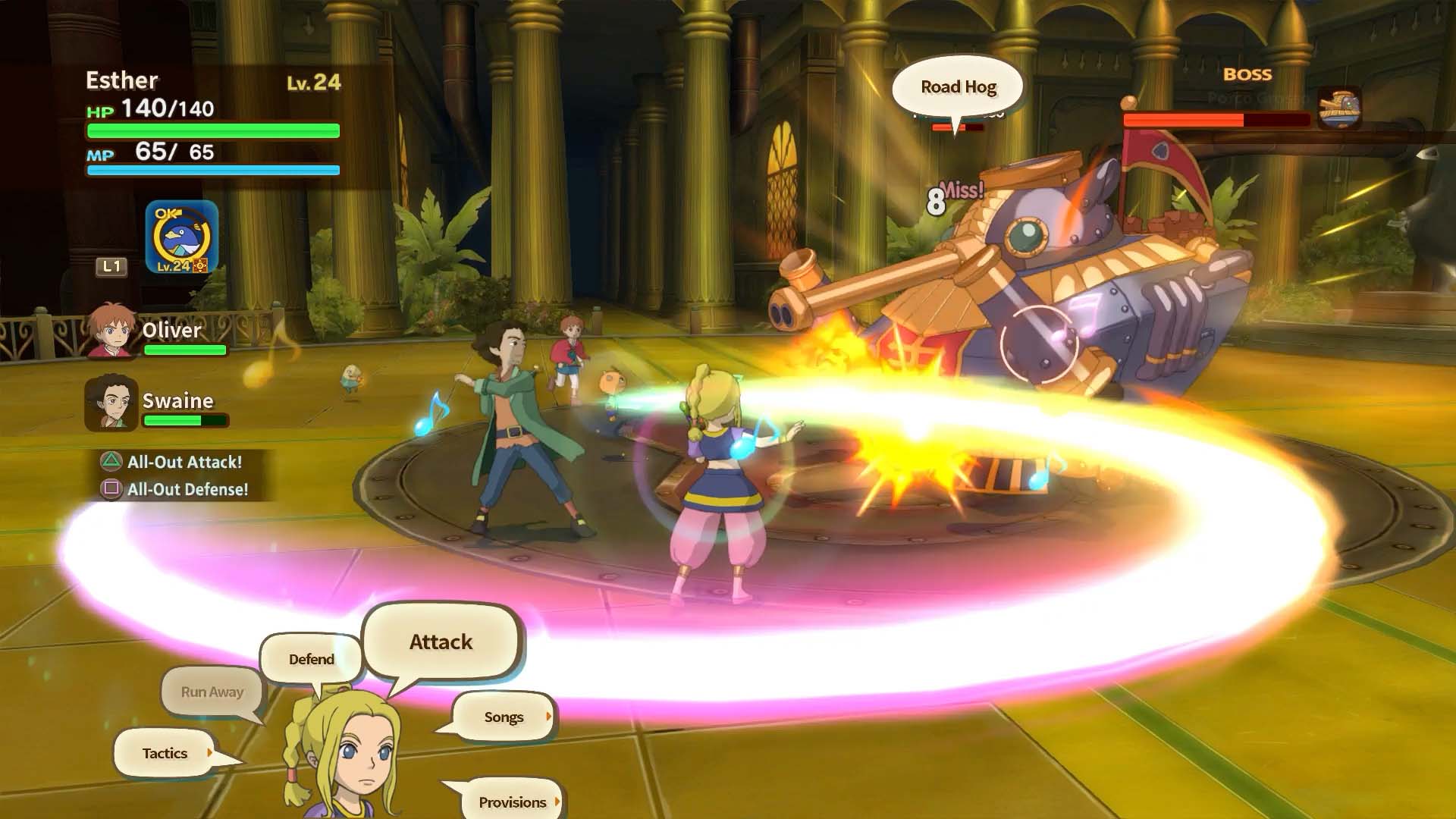
Whether he is casting fireballs or healing spells, he is usually the one who helped to push me over the edge to squeeze out victories against some of the tougher bosses in the game.
Ni No Kuni tells the story of Oliver, a young boy who lives in a town called Motorville with his mother. He seems to live a simple and happy life until an unfortunate accident leads to his mother dying from heart failure leaving him alone and heartbroken.
For three days he spends every moment in his room crying, hoping that she will return. On the third day he grabs a small stuffed doll, a gift made by his mother and cries once more, only this time his tears fall onto the doll, bringing it to life.
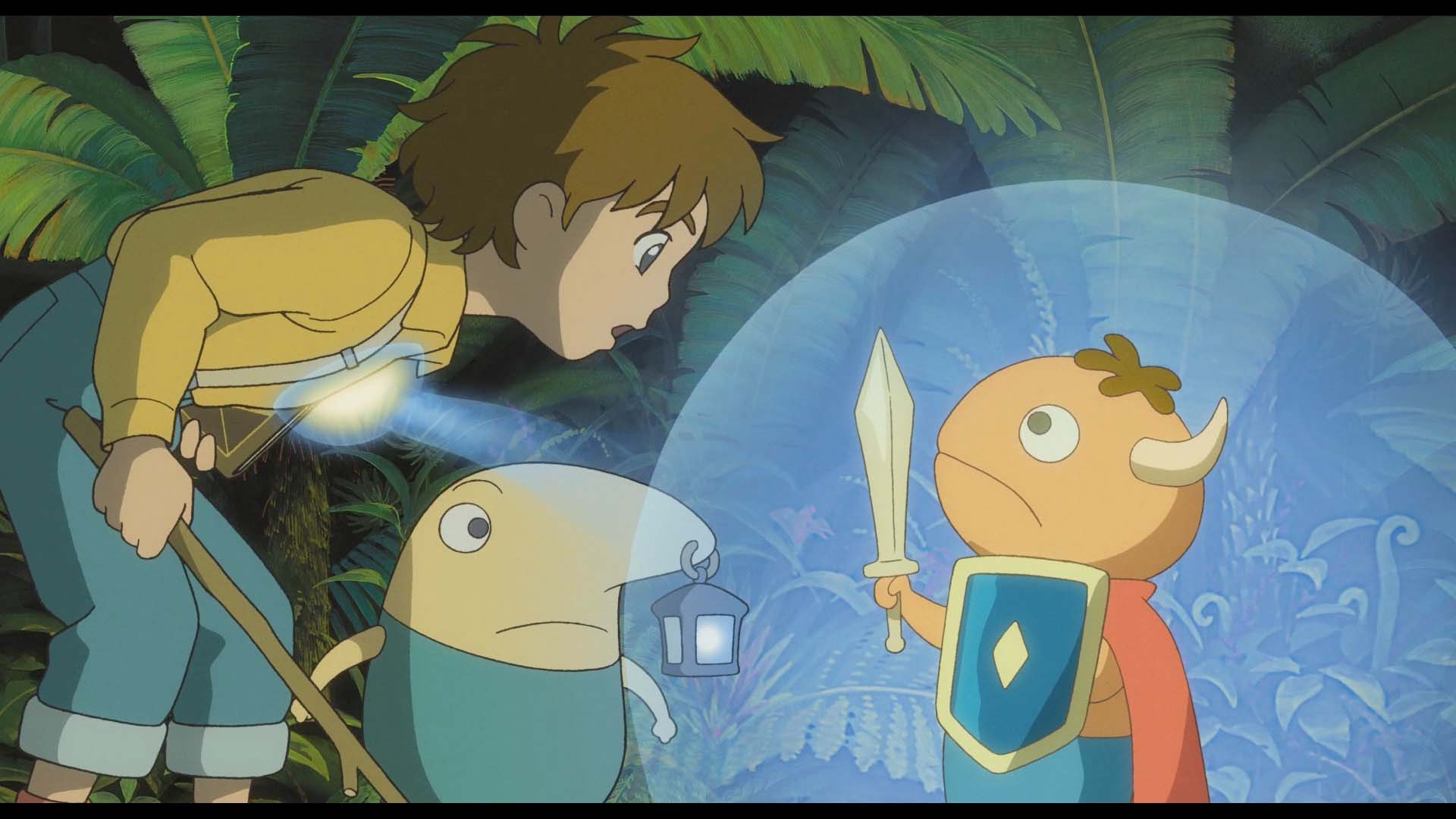
As it turns out this was no ordinary doll, his name is Drippy, the King of the Faeries. Drippy has come from another world looking for help to defeat the evil Djinn, Shadar. To do so, he needs to find “The Pure-Hearted One”, whom he believes to be Oliver.
At first Oliver refuses to aid Drippy in his quest to save his world from the evil Djinn, Shadar. But when Drippy informs him that if they work together to defeat Shadar, they just might be able to save Oliver’s mother in the process.
Drippy informs Oliver that their two worlds are connected, and every person on Earth has someone who just like them in Drippy’s world called a “soulmate”, and as it turns out, Oliver’s mother’s soulmate was a powerful wizard by the name of Alicia who went missing.
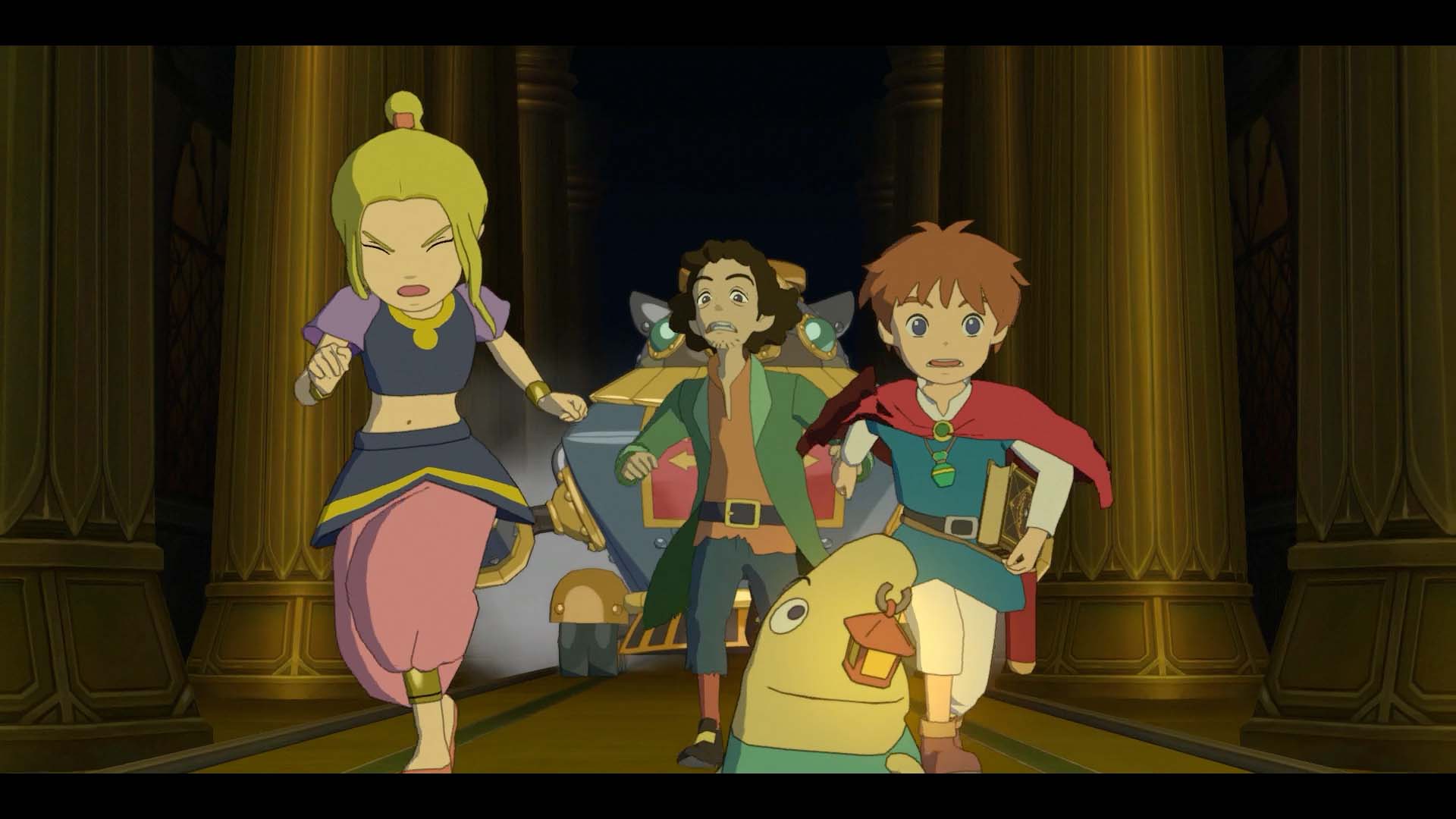
Drippy believes that if they rescue Alicia, they will be able to save Oliver’s mother, which is enough to get him to agree. When they do arrive in Drippy’s world, they discover that the people have been afflicted by an ailment called “broken-heartedness” which saps them of their will to do anything. Shadar has broken the hearts of anyone who they believed willing to resist them and it’s up to Oliver, the “Pure-Hearted One” to save them.
Over the course of Ni No Kuni’s story, Oliver has to learn how to become a powerful wizard in order to rescue both worlds, along with his mother. He must save the people from their broken hearts, all while at the same time, growing and learning more about himself and the world around him.
Much like the art style, this story is 100% Miyazaki and, in many ways, reminds me of my favorite Ghibli film, Howl’s Moving Castle, where a mundane normal person is thrust into a world of magic. While pacing can be an issue at times in Ni No Kuni, it never felt so bad that it dragged the adventure down.

What is probably the most well known aspect of Ni No Kuni is its art style and presentation. I have said it many times in this review already, but Ni No Kuni is 100% Studio Ghibli.
From the voice acting to the graphics, there is never any doubt that Level-5 had an incredible attention to detail here, which is what initially led to me picking up the game in the first place. Anyone who is even a passing Ghibli fan would be remiss if they did not give this game a shot for that alone.
While the Switch port does only run at 30 FPS, that is more than enough for a game that can be played on the go without any noticeable frame drops. The 3D models are able to properly capture the feeling of Miyazaki, which warms my heart. While the Switch version is just a port, the PC version is remastered and both looks and runs wonderfully.
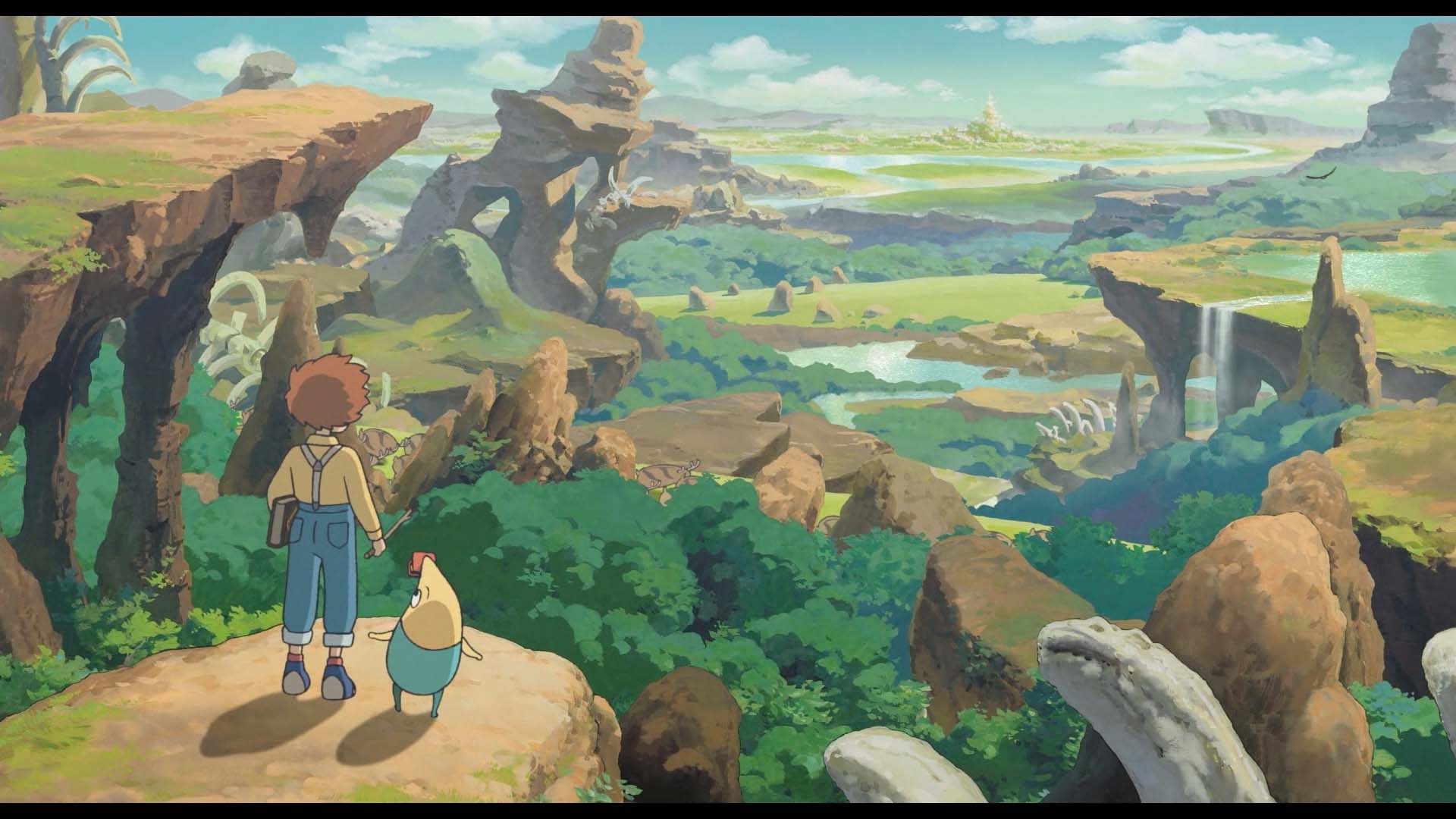
But what really stands out to me is the 2D animated cutscenes used throughout the game during important moments. Each of these scenes feels as high quality as a movie and has the same amount of love as one and helps to elevate Ni No Kuni.
The other aspect that stands out to me is the voice acting, similar to other Studio Ghibli and specifically, Miyazaki films, the English voice cast is incredibly..well…English. Thick accents are used to help make characters more vibrant and explosive personalities.
While characters like Oliver are more reserved, so is his accent, but his traveling companion and friend, Drippy is a loud, foolhardy fairy, and with that his accent borders on over the top. It all feels strange, otherworldly, and perfect when it all comes together. Together all of these aspects blend to become a wonderfully cute experience.
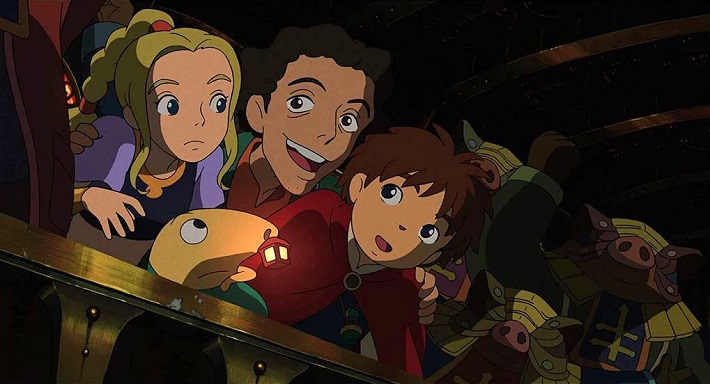
While Ni No Kuni was never the perfect JRPG, it is a game that has enough charming qualities to warrant a playthrough for that alone. It left me feeling warm and fuzzy at times, and its ending was satisfying enough that I walked away comfortable with my time, considering it well spent.
When you mix one of the most well known animation studios in the world with one of the best game developers in Japan, they can create real magic together – and they did. If you have never had the chance to play the game originally, you would be doing yourself a disservice if you miss it again.
Ni No Kuni is crafted with such care and detail that it feels as though I was playing through a Studio Ghibli movie that lasted me 30+ hours. In my mind, it is one of the most charming JRPG’s I have ever experienced.
Ni No Kuni Remastered was reviewed on Nintendo Switch and PC using a review copy provided by Bandai Namco. You can find additional information about Niche Gamer’s review/ethics policy here.